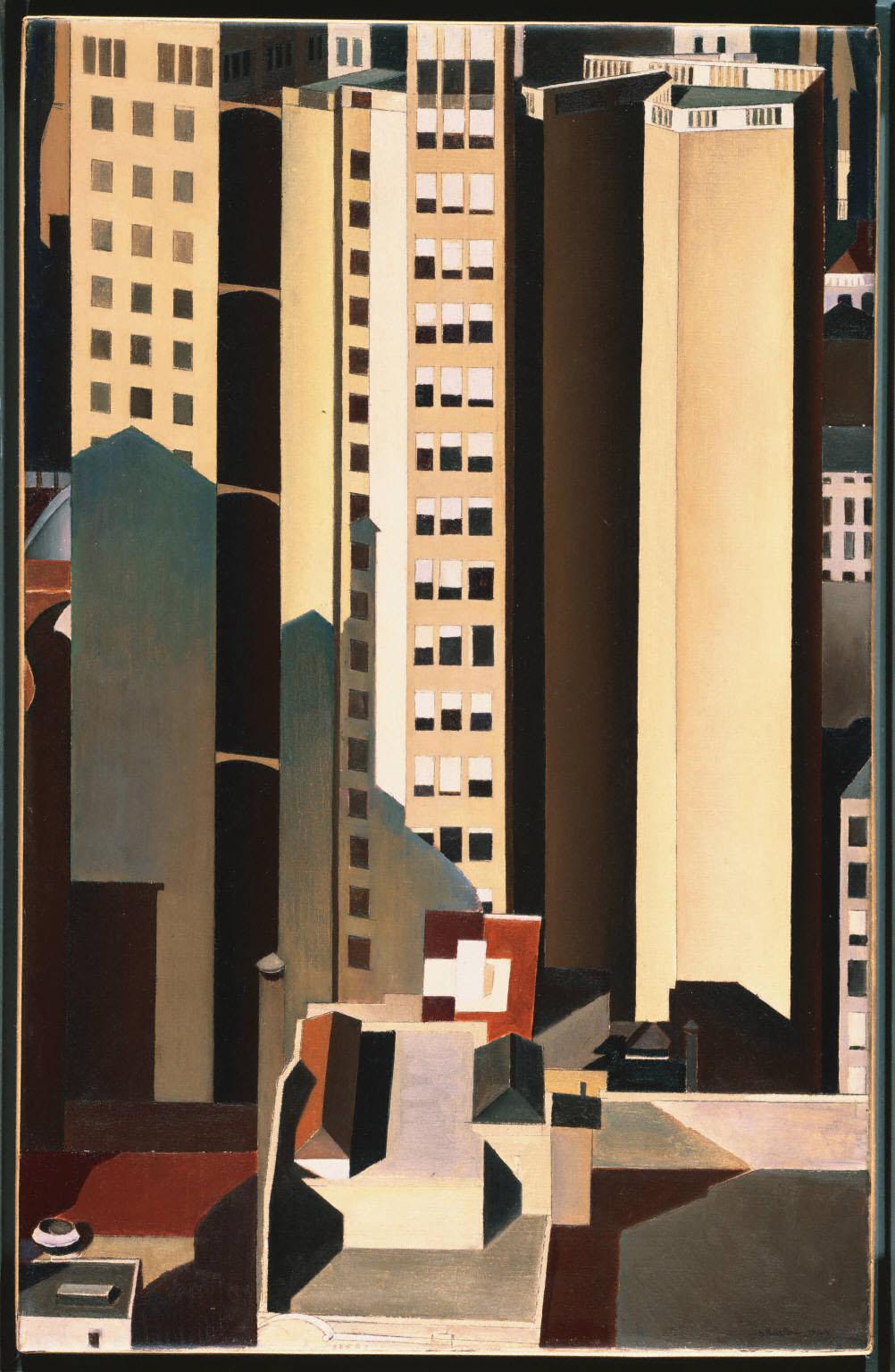Skyscrapers
Charles Sheeler ( 1922 )

Skyscrapers, which reflects the 1920s precisionist aesthetic, is one of Charles Sheeler’s most accomplished assimilations of European modernism into his own uniquely American style. Using sharply defined contours, non-atmospheric planes of color, and intense frontal light, Sheeler conveyed to the viewer a sense of monumental buildings grouped together. Sheeler’s personal artistic reevaluation occurred when, after studying under William Merritt Chase at the Pennsylvania Academy of Fine Arts, he traveled to Italy and France in 1908-1909. Upon his return to Philadelphia, Sheeler discarded the Chase-inspired spontaneous, bravura brushstrokes he had been favoring and began employing a structure – the “steel frame which would support the bricks and mortar” – reminiscent of early Italian Renaissance masters such as Piero della Francesca and Giotto and of the French modernists, notably Cézanne, Braque, and Picasso. His intent was to establish order and permanence in his work.
Once in New York, Sheeler imposed these ideas on a subject that was rapidly becoming an American icon: the skyscraper. Like the Pennsylvania barn, a theme that he had explored in 1917 and 1918, it too was “simple and suited to its purpose.” In essence the skyscraper was a “ready-made” subject for Sheeler’s attempt to capture the streamlined grandeur of New York. The geometry of the buildings lent itself ideally to the creation of abstract designs on canvas.